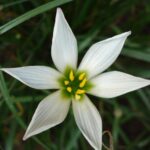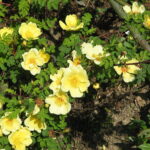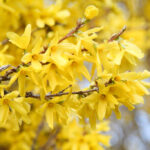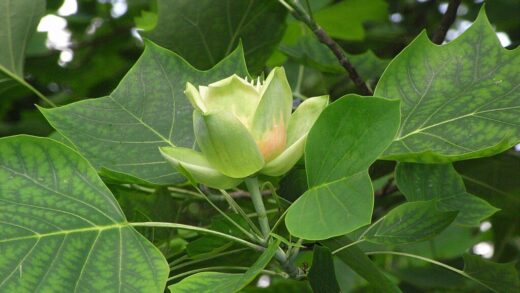Caring for forsythia
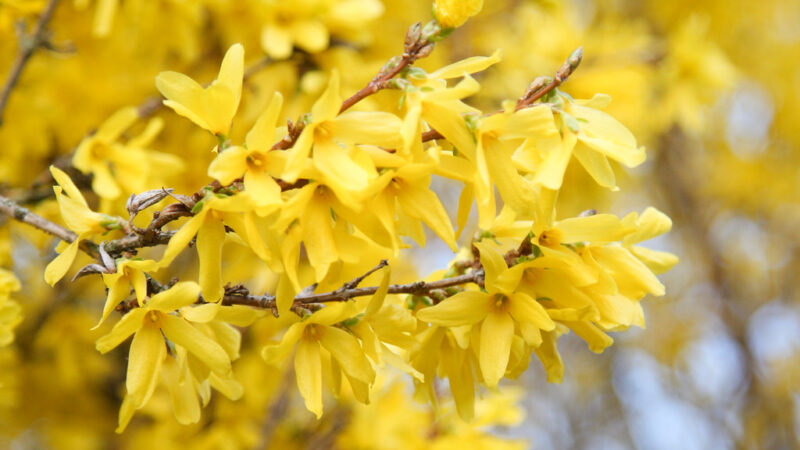
Forsythia is a genus of flowering plants in the olive family Oleaceae, renowned for its vibrant yellow flowers that herald the arrival of spring. These deciduous shrubs are exceptionally hardy and relatively low-maintenance, making them a favorite among both novice and experienced gardeners. Proper care ensures not only the survival of the plant but also a spectacular annual floral display that can become the centerpiece of any garden landscape. Understanding the fundamental needs of forsythia, from its soil preferences to its sunlight requirements, is the first step towards cultivating a healthy and vigorous specimen. This comprehensive guide will delve into every aspect of forsythia care, providing the detailed knowledge necessary to help your shrub thrive for years to come.
Caring for forsythia begins with providing it a suitable environment where it can establish a strong root system and grow robustly. These shrubs are known for their adaptability, tolerating a wide range of soil types and conditions, which contributes significantly to their popularity. However, for optimal growth and the most prolific blooming, a well-drained soil is paramount, as waterlogged conditions can lead to root rot and other health issues. Before planting, it is always beneficial to amend the soil with organic matter, such as compost or well-rotted manure, to improve its structure and nutrient content. This initial preparation creates a foundation of health that will support the plant throughout its life cycle.
The overall health of a forsythia is directly reflected in its flowering capacity, which is the primary reason for its cultivation. A healthy shrub will produce a dense cascade of brilliant yellow blossoms along its arching stems early in the spring, often before its leaves emerge. To encourage such a display, consistent care practices are essential, including appropriate watering, timely fertilization, and strategic pruning. Neglecting these core aspects can result in a plant that, while it may survive, will likely have sparse flowering and a less vigorous appearance. Therefore, a proactive approach to care is crucial for achieving the stunning visual impact forsythia is known for.
Beyond the basic requirements, long-term care involves monitoring the plant for any signs of stress, disease, or pest infestation. Although forsythia is generally a resilient shrub, it is not entirely immune to problems, and early detection is key to effective treatment. Regular inspection of the leaves, stems, and base of the plant allows you to identify and address issues before they become severe. Furthermore, understanding the plant’s natural growth habit and life cycle will inform your care decisions, helping you to work with the plant’s tendencies rather than against them for a more beautiful and resilient shrub.
Soil and site selection
Choosing the right location is the most critical decision you will make for the long-term health and success of your forsythia. These shrubs absolutely thrive in areas that receive full sun, which means they require at least six hours of direct, unfiltered sunlight each day. While forsythia can tolerate partial shade, a lack of adequate sunlight will significantly diminish its ability to produce flowers, often resulting in a leggy plant with sparse blooms. Therefore, when scouting for a location, prioritize an open area away from the shadow of large trees or buildings to ensure your forsythia can bask in the sun it needs for a spectacular spring show.
More articles on this topic
The soil composition is another vital factor that directly influences the plant’s vigor. Forsythia is not overly particular about soil pH, growing well in conditions ranging from slightly acidic to slightly alkaline. However, the soil must be well-draining to prevent the roots from becoming waterlogged, a condition that can quickly lead to fatal root rot. If you have heavy clay soil, it is essential to amend it generously with organic material like compost, peat moss, or shredded bark to improve its drainage and aeration. This creates a loamy texture that allows roots to breathe and access nutrients effectively.
When preparing the planting site, consider the mature size of the forsythia variety you have chosen, as they can range from compact dwarf shrubs to large, arching specimens reaching several meters in height and spread. Ensure there is ample space for the shrub to grow to its full potential without being crowded by other plants, fences, or structures. Good air circulation around the plant is important not only for its growth but also for preventing the development of fungal diseases. Providing enough room from the outset will prevent future problems and eliminate the need for drastic pruning later on.
Finally, think about the role of the forsythia in your overall landscape design. Its brilliant yellow flowers make it an excellent choice for a specimen plant, a hedge, or as part of a mixed shrub border. Planting it on a slope or bank can help with erosion control, as its fibrous root system is effective at holding soil in place. By considering both the plant’s horticultural needs and its aesthetic function, you can select a site that ensures the forsythia will be both a healthy and a beautiful addition to your garden.
Watering requirements
Proper watering is fundamental to establishing a new forsythia shrub and maintaining its health, especially during its first few years. Immediately after planting, the shrub should be watered deeply to settle the soil around the root ball and eliminate any air pockets. For the first growing season, a consistent watering schedule is crucial; the soil should be kept consistently moist but not saturated. A general guideline is to provide about one inch of water per week, either from rainfall or supplemental irrigation. Always check the soil moisture by inserting your finger a few inches deep; if it feels dry, it’s time to water.
More articles on this topic
Once a forsythia is well-established, typically after two or three years, it becomes remarkably drought-tolerant and requires much less frequent watering. Mature shrubs have developed extensive root systems that are efficient at finding moisture deep within the soil. During periods of normal rainfall, you may not need to provide any supplemental water at all. However, during prolonged hot, dry spells or droughts, even established plants will benefit from a deep soaking every few weeks to prevent stress, which can manifest as wilting leaves or a decline in overall vigor.
The method of watering is just as important as the frequency. It is always best to water forsythia at the base of the plant, delivering water directly to the root zone where it is needed most. Using a soaker hose or drip irrigation system is ideal as it minimizes water loss through evaporation and keeps the foliage dry, which helps to prevent the spread of fungal diseases like leaf spot. If you are watering by hand, use a gentle stream and allow the water to soak in slowly and deeply rather than running off the surface.
Avoid shallow, frequent watering, as this encourages the development of a weak, shallow root system that is more vulnerable to drought stress. Instead, water deeply and less often, which encourages the roots to grow deeper into the soil in search of moisture, creating a more resilient and self-sufficient plant. Monitoring the plant’s appearance and the condition of the soil will always be your best guides. A healthy, well-watered forsythia will have vibrant green leaves and strong, flexible stems.
Fertilization for optimal blooms
Forsythia is not a heavy feeder and generally performs well without a rigorous fertilization schedule, especially if it is planted in soil rich in organic matter. Over-fertilizing can be counterproductive, leading to excessive foliage growth at the expense of flower production. A common mistake is to apply a fertilizer high in nitrogen, which stimulates green, leafy growth but can significantly reduce the number of blooms. For this reason, a minimalist approach to feeding is often the most effective for this particular shrub.
The best time to fertilize forsythia, if necessary, is in the late winter or early spring before new growth begins to emerge. A single annual application is typically sufficient to provide the nutrients needed for the upcoming season. A balanced, slow-release granular fertilizer, such as a 10-10-10 or a formulation specifically designed for flowering shrubs, is a good choice. Apply the fertilizer around the base of the plant, extending out to the dripline (the edge of the canopy), and gently scratch it into the soil surface before watering it in thoroughly.
An excellent alternative to synthetic fertilizers is to use organic amendments, which improve the soil structure while providing a slow, steady supply of essential nutrients. Spreading a one- to two-inch layer of well-rotted compost or aged manure around the base of the shrub each spring is a fantastic way to nourish the plant naturally. This organic top-dressing not only feeds the forsythia but also helps to conserve soil moisture, suppress weeds, and encourage beneficial microbial activity in the soil.
If your established forsythia is growing well and producing an abundance of flowers each year, it may not need any supplemental fertilizer at all. The key is to observe the plant’s performance. Signs that may indicate a need for feeding include pale or yellowing leaves (chlorosis), stunted growth, or a noticeable decline in flower production from previous years, assuming other conditions like sunlight and water are adequate. In these cases, a soil test can be very helpful to determine if there are specific nutrient deficiencies that need to be addressed.
Pruning for health and shape
Pruning is arguably the most important maintenance task for keeping a forsythia healthy, vigorous, and blooming profusely. The primary rule of pruning forsythia is timing: it must be pruned immediately after it has finished flowering in the spring. Forsythia blooms on old wood, meaning it forms its flower buds during the summer and fall for the following year’s display. If you prune it in the fall or winter, you will be cutting off the very stems that would produce the spring flowers, resulting in a flowerless shrub.
The goal of pruning is twofold: to maintain the desired size and shape of the shrub and to encourage the growth of new wood, which will carry future blooms. A good practice is to start by removing any dead, damaged, or diseased branches at any time of year they are noticed. For the main post-flowering prune, focus on a renewal pruning technique. This involves selectively cutting back about one-quarter to one-third of the oldest, thickest stems right down to the ground. This opens up the center of the shrub, improving air circulation and allowing more sunlight to reach the interior.
In addition to removing the oldest stems, you can also trim back the remaining branches to encourage bushier growth and maintain a more compact shape. Cut back stems that have just flowered to a strong, outward-facing bud or side shoot. Avoid shearing the forsythia into a formal, tidy ball or square. This practice not only destroys its graceful, arching natural form but also often removes the majority of the flowering wood, leading to a poor floral display confined only to the outer surface of the shrub.
A severely overgrown forsythia that has been neglected for many years can be rejuvenated with a hard pruning. This drastic measure involves cutting all the stems back to within about 10-15 centimeters of the ground immediately after flowering. The shrub will respond by sending up a flush of new, vigorous shoots from the base. While this method will mean sacrificing flowers for the following year, it will restore the plant to a more manageable size and a much healthier state for the long term.
Common pests and diseases
While forsythia is known for its resilience, it can occasionally fall prey to certain pests and diseases that can affect its health and appearance. One of the most common issues is leaf spot, a fungal disease that causes dark spots to appear on the foliage, sometimes with a yellow halo. While typically not life-threatening, a severe infection can cause premature leaf drop. To manage leaf spot, ensure good air circulation around the plant through proper pruning, avoid overhead watering, and rake up and destroy fallen leaves in the autumn to reduce the source of fungal spores.
Another potential problem is crown gall, a bacterial disease that results in the formation of large, woody, tumor-like growths, or galls, on the roots and lower stems of the plant. These galls can interfere with the plant’s ability to transport water and nutrients, leading to stunted growth and a general decline in health. There is no chemical cure for crown gall; the best course of action is to prevent it by avoiding injury to the plant’s stems and roots, as the bacteria enter through wounds. If a plant is severely infected, it should be removed and destroyed, and you should avoid planting another forsythia or other susceptible species in the same spot.
In terms of insect pests, forsythia is not a primary target for many, but it can sometimes be affected by aphids or spider mites, especially if the plant is under stress. Aphids are small, soft-bodied insects that cluster on new growth and the undersides of leaves, sucking sap and causing distortion. Spider mites are tiny arachnids that are difficult to see with the naked eye but can be identified by the fine webbing they create on the plant. Both pests can often be controlled by a strong spray of water from a hose or by introducing beneficial insects like ladybugs and lacewings into the garden.
Vigilance is the best defense against pests and diseases. Regularly inspecting your forsythia allows for the early detection of any problems, making them much easier to manage. A healthy, well-cared-for plant growing in its preferred conditions of full sun and well-drained soil will always be more resistant to attack. By providing optimal care, you are creating a strong plant that is naturally better equipped to fend off potential health issues, ensuring it remains a vibrant feature in your landscape.
Long-term maintenance strategies
Ensuring the long-term vitality of your forsythia involves a consistent and observant approach that goes beyond the basic annual tasks. One key long-term strategy is to manage the shrub’s size and density through a regular renewal pruning program, as previously discussed. This prevents the shrub from becoming a tangled, unproductive mass of old wood. By selectively removing the oldest canes each year after flowering, you continually stimulate the growth of new, vigorous stems from the base, which are the ones that will produce the most abundant flowers in subsequent seasons. This ongoing process keeps the plant perpetually youthful and productive.
Mulching is another critical component of long-term forsythia care that provides numerous benefits. Applying a 5- to 7-centimeter layer of organic mulch, such as shredded bark, wood chips, or compost, around the base of the shrub helps to conserve soil moisture, which reduces the need for supplemental watering, especially during dry periods. Mulch also effectively suppresses weed growth, reducing competition for water and nutrients. As the organic material breaks down over time, it enriches the soil, improving its structure and fertility and contributing to the overall health of the plant.
Periodically, you should assess the forsythia’s location to ensure it is still receiving adequate sunlight. Over time, surrounding trees and shrubs can grow and begin to cast more shade on the forsythia, which can lead to a gradual decline in flowering. If you notice a reduction in blooms and suspect increasing shade is the cause, you may need to consider pruning the overhanging branches of nearby trees, if possible. In some cases, transplanting the forsythia to a sunnier location may be the best long-term solution, a task best undertaken in the dormant season.
Finally, a crucial aspect of long-term care is simply observing your plant throughout the seasons and responding to its needs. Pay attention to the quality of its foliage, the abundance of its flowers, and its overall growth habit. These are all indicators of the plant’s health. By becoming familiar with your forsythia’s normal appearance and growth cycle, you will be better able to spot subtle changes that might signal an underlying issue, whether it’s a nutrient deficiency, a pest problem, or environmental stress. This attentive, proactive approach is the hallmark of a successful gardener and the key to enjoying your forsythia’s spectacular display for many years.
📷 Flickr / Szerző: Maja Dumat / Licence: CC BY 2.0








